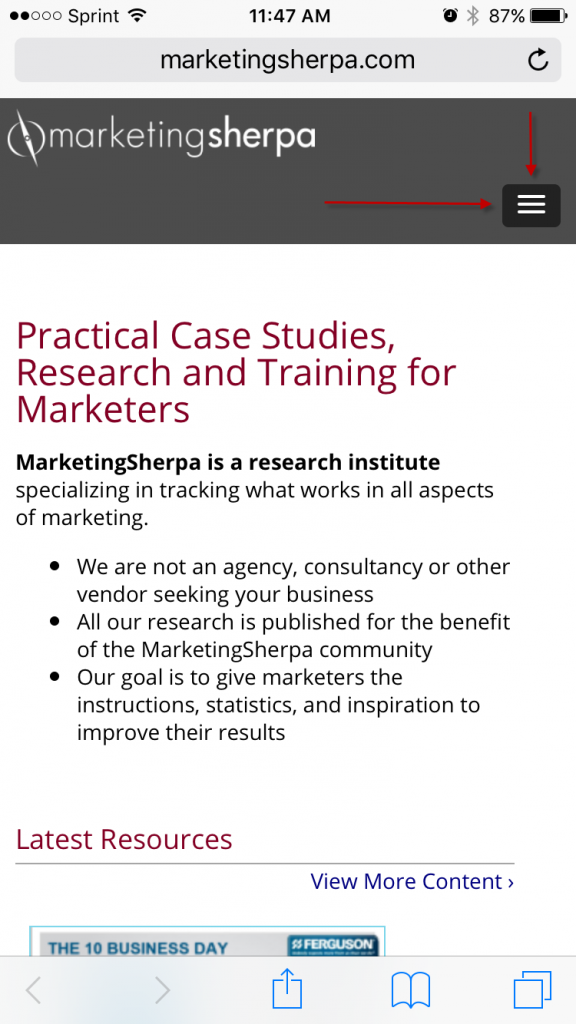“I was wondering about the methodology of MECLABS, about micro-yeses and the micro-moments. There are some similarities about both terms. Do you have some articles on the topic micro-yeses vs micro-moments? If yes, can you provide me a link for it? If you don’t, this is a good topic for the next one, I guess.”
This suggestion comes courtesy of a MarketingSherpa Inbound Marketing newsletter subscriber who recently completed the MECLABS Institute Value Proposition Development course (from MarketingSherpa’s parent research institute).
Understanding these two topics — the micro-moment and the micro-yes — is especially important to the inbound marketer.
Content and social media tend to be consumed in micro-moments, and to get customers to engage with your social and content (and ultimately take a larger conversion action, like a purchase) requires a micro-yes to get a micro-conversion.
Micro-moments, i.e., “I will not waste 37 seconds standing in line without being entertained!”
“We put a name to a behavior that, thanks to mobile, was becoming pervasive. People had started to expect an immediate answer in the moments they wanted to know, go, do and buy,” said Lisa Gevelber, VP of Marketing for the Americas, Google, in the article 3 new consumer behaviors playing out in Google search data.
Essentially, mobile web use is exploding. Yada, yada, yada. I’m sure you know all of that.
But the important element to take away is not just the form factor that mobile use requires (e.g., responsive design) but the customer behavior shift mobile hath wrought.
And this is a trap we as marketers fall into. When we’re reviewing our social, our content, our landing pages, our advertising, our email, etc., we’re pretty darned focused on it. We eliminate as many distractions as possible. We craft headlines and body copy with a surgical precision. We know every detail about our products and services.
However, the customer is taking a mere micro-moment in their day with many other distractions going on. When they come across your blog post, they — “Jimmy! I told you to put that down and get off of your brother!” — interact with your content, social and marketing messages in a much more distracted fashion — “Wait, what did they say? Was that Flight 2054 to Jacksonville canceled? Or did they say Flight 2045?” — so you need to make sure your messages are clear and compelling.
Hence the need for micro-yes(s); more on that in a moment.
But the bigger point is this: Next time you’re looking at a marketing piece or piece of content, don’t just make sure the form is optimized for mobile (e.g., big buttons, white space, whatever). Make sure you’re thinking through that customer’s mobile behavior.
Because customers often exhibit different behaviors in these micro-moments. To wit, “Mobile searches for ‘best’ have grown 80% in the past two years,” Gevelber said.
So this behavior impacts your SEO and content strategies, for example. What type of information will people be searching for in a micro-moment? What content would help them?
Read more…













